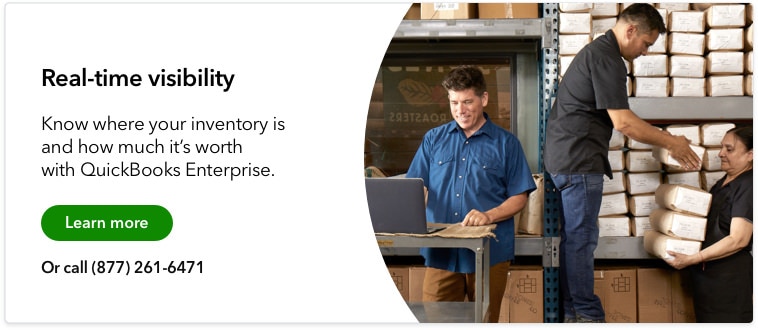Inventory is one of the highest costs for any business. Companies must know their customers well and have an accurate product mix at the right price.
Using data from past sales cycles and predictive analytics can prevent businesses from finding themselves holding on to too much inventory, having taken on losses from carrying costs. However, recent events have shown us that predicting supply chain functionality and consumer demand can be challenging to forecast.
Let’s examine one way to offset some of the inherent risks in stocking inventory and explore another method retailers and businesses are starting to use to avoid entering a financially precarious position: consignment inventory.
What is consignment inventory?
Consignment inventory is a type of stock a retailer sells for another company. For their effort to sell the inventory, the business that owns the products gives the consignee a cut of the profits. The store that is selling the products does not purchase them outright. They only get paid when the items actually sell.
For example, you’ve probably entered a consignment clothing store at least once. Unlike a buy-back store, where someone brings in goods they are looking to part with, and the store buys them to resell, in a consignment store, the store owner will place the products in their store and give shoppers the chance to purchase them.
When a sale is made, the consignor (the product owner) gets a majority of the sale price back, while the consignee will take a small percentage for the effort of displaying and selling the product.
How is consignment inventory different from wholesale?
Consignment inventory is different from a wholesale distributor because the consignor — the owner of the product — only gets paid if the product sells. In wholesale transactions, the owner of the product (or inventory) is paid upfront by the retailer that wants to sell its goods. They buy a specific set of units from the wholesaler for a set price per unit, knowing they will add a markup when selling it retail.
In a wholesale scenario, the retailer purchases the product from the wholesaler outright and therefore will lose money if the product doesn’t sell. The wholesaler keeps their revenue from the sale to the retailer regardless.
In a consignment scenario, the retailer only makes a profit when the product sells; however, they have not paid the product owner anything for the product. Therefore, if the product doesn’t sell, the retailer hasn’t lost any money.
How is consignment inventory different from dropshipping?
Drop shipping is essentially a fulfillment strategy where are ecommerce store doesn’t actually own the inventory it sells, but buys it from a third party who also stores the inventory and fulfills the orders.
Consignment inventory is different because although the retailer doesn’t buy the inventory from the from the producer, they still hold the inventory on premise, as well as display the product, while taking a cut of the profits.
3 Key benefits of holding consignment inventory
There are benefits for both the consignor (product owner) and consignee (retailer) when operating a consignment inventory arrangement. Here are the key ingredients that make the arrangement a good deal for both sides.
Benefits for the consignor
- Ability to make a sale with little to no promotion.
Because the product is in a retail location that presumably either gets foot traffic or website visitors, the onus of selling the product is no longer under the purview of the consignor.
- Ability to test new products in the marketplace.
If a consignor is looking to expand their product line, selling the products on consignment offers a few benefits. Primarily, it allows the consignor to get the new product in front of prospective customers reasonably quickly to see if it has a chance of being successful.
- Ability to get products in front of more customers.
Typically, when selling inventory on consignment, the consignor will look for a store or website that caters to their target customer and already has a large customer base. These factors offer a better chance that the product will sell and the consignor will get paid. It also means that the consignor can get their product in front of more potential customers by capitalizing on the consignee’s already established brand.
Benefits for the consignee
- Lower financial risk to put products on the shelves.
Retailers prefer a robust amount of products for customers to choose from. However, inventory costs add up quickly, and businesses don’t want to stock their shelves at the risk of their cash flow. Consignment inventory can be a great way to offer products without taking the financial risk of purchasing them first.
- Less pressure to move the inventory.
While sales are good for all businesses, consignment inventory doesn’t technically “cost” the retailer anything. Therefore, if it doesn’t sell, the consignee has very little consequence.
- Ability to offer more products.
Offering new products to customers is risky. There’s always a chance they won’t like the new thing and leave retailers stuck with unsold inventory. However, trying out new products via consignment is a great way to try something with a low amount of risk.
Consignment inventory best practices
In order to make the most of consignment inventory, retailers should take the following steps to ensure a mutually beneficial arrangement.
Find a reputable vendor
It’s about more than finding the right product to sell to your customers. You also want to be sure you are working with a reputable vendor that has a strong track record for delivering quality products on time and understanding how to make things right if something goes wrong.
Draw up a mutually beneficial contract
Everything from pricing to the consignment fee to storage location to time frame should be covered in a consignment agreement. The contract should benefit both parties as much as possible and offer fair terms for both sides.
How QuickBooks Enterprise supports efficient inventory management
Keeping track of consignment inventory is a function of inventory management. To maximize your revenue and improve inventory efficiency, use best-in-class software like QuickBooks Enterprise that can easily manage the complexity of inventory management.
QuickBooks Enterprise can track inventory across multiple locations, from the warehouse to your customer’s doorstep. It can also help manage inventory levels by offering inventory transfers between locations.
Additionally, your team can get real-time visibility into inventory levels and reduce errors that cut into profit margins.
Consignment inventory can work for your business
New product offerings, no matter the sales channel, can be risky business in today’s retail environment. By diversifying your inventory with consigned goods, you can reduce risk while providing your customers with new and exciting products.
Using consigned inventory can help retailers improve their cash flow, while providing consignors the opportunity to introduce their products to new customers — a true win for all involved.











